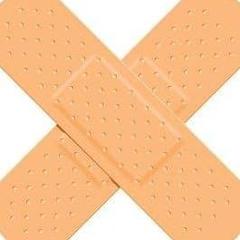-
Posts
63 -
Joined
-
Last visited
About Don Golfo

Personal Information
-
Your Location
UK
Your Golf Game
- Index: 22
- Plays: Righty
Recent Profile Visitors
1,573 profile views
Don Golfo's Achievements
-
Don Golfo changed their profile photo
-
I’ve seen plenty of professionals in Cricket draw a “duck” (Bowled out on the first ball with no runs more or less). It’s not an easy game. In fact it’s a very difficult game. Fast balls arrive at nearly 100 mph, often with an unpredictable bounce, deliberately delivered long and short of the wicket to vary the height on arrival at the batsman. Spin bowlers can deliver the ball at 70-80 mph but deliver the ball so that it dramatically changes direction directly in front of the batsman after the bounce. The change in direction happens in roughly 1/10th of a second after the bounce. Add to that the impact of changing wicket conditions which makes a massive difference to how the ball performs. Make no mistake cricketers are amazing athletes and the game requires very quick reflexes and excellent hand-eye coordination. You could debate whether or not it’s easier or harder than golf I think. Ok pal I won’t waste anymore of your time. Take it easy.
-
Is it better suited to slower tempo swingers?
-
In retrospect I probably used a poor form of words. I’m not really trying to defend Brian’s philosophy, I’m contrasting it with other more rigid forms of instruction. There seems to be two schools of thought in golf instruction. Those that prefer a methodical, system and tend to analyse movement of the body in quite a lot of detail. By correcting the body movement you correct the swing fault is the paradigm. This approach has created lots of swings that look better and might function better in the medium and long term? This approach is much more radical and fundamental and takes a lot of commitment and effort? This seems like the dominant form to me currently. The other form starts with the ball flight and seeks to first to understand what’s occurring at impact and to make it better by applying a relatively simple correction. This could be a grip change or changing the swing plane. It doesn't seek to reconstruct the entire golf swing and accepts that individuals will make their own compensations to impact the ball. This is anathema to most modern instructors who see it as a sticking plaster approach. That said, Brian and his cohort appear to have a lot of happy clients who claim significant improvement in hcp and enjoyment of the game, not to mention a successful and growing golf brand.
-
I'm not sure Jacobs was all about band aid fixes. I think he was a pragmatist. He played tournament golf to quite a high standard (Ryder Cup), beat Gary Player in his prime to win the South African Match Play Championship and coached numerous top tour pros including Nicklaus and Olazabal. Not, to mention that he was the president of the European PGA. He was certainly regarded as a pioneer of golf instruction and one of the world’s experts on Golf tuition at every level of the game. Where he was different I think was the realisation that the golf pros’ duty is to help all standards of golfer improve and to taylor instruction to the needs and limitations of the student. There is no point in trying to apply a tour player type of approach to your average Sunday golfer? He doesn't have the time or inclination to beat 1000s of balls every week over a period of years to create a perfect looking swing? What he needs is an instructor to intelligently help him improve quickly by eliminating obvious swing faults. Humility is a very under rated trait. No student can reasonably expect perfection, just an honest straight forward approach.
-
What I mean is you are hitting the ball better at the end of the lesson period. Otherwise, what was the point of the lesson? I have definitely taken lessons where the instructor has identified a fault and helped me correct it with a lasting improvement. On the other hand I've had plenty of lessons that made me much worse. I find grip changes for example to be very difficult. I think that's exactly the thought process that I would like my instructor to use. That takes intelligence and the ability to weigh up the student? Do you ask the student about which ”Way” you are going to go up front? I honestly prefer the instructor to tell me what they're doing and why.
-
Not sure tennis, baseball or cricket are that much different really? When you start playing cricket as a youngster the emphasis is on holding the bat and setting up properly at the stumps (which is remarkably like golf) and then trying to mimic the movement and strokes of better players. Nobody tries to fill your head with too much technical detail and video analysis doesn't feature at all. The result is that most kids are playing proficiently and more importantly enjoying the game after a single summer of practise. In addition they all have batting strokes that look pretty good and naturally shift their weight forwards to hit the oncoming ball without thinking about it. In comparison golf instruction seems to immediately become technical. Yes we do. Human beings have immense hand eye coordination, spatial awareness and fine motor skills that are completely unparalleled amongst any other creature on earth. Without that skill and these innate attributes we would never have invented sports and games in the first place?
-
I'm guessing that we also smacked the odd snake on the head with a stick too? Anthropologists generally agree that sports are a surrogate for hunting. As we no longer have to hunt for our food we need something to fill the vacuum. Hence why golf and football (soccer) were invented in the first place.
-
I’d love a GC2. It looks fantastic in terms of capability. I bought the ES14 from Ernest Sports which is a lot cheaper (£500 in the UK I think from memory). It measures the clubhead and ball speed with doppler radar and calculates launch angle, spin rate, carry and total distance. Obviously It's a bit approximate, but it works ok providing you set up each of your clubs properly. Judging from markers at my range its quite accurate on well hit shots, but sometimes gives a false reading on a miss hit. The big downside is a lack of directional information. It does though give you quite a lot of insight, particularly on the consistency of carry distance. It's also been interesting to understand Driver performance; a major advantage is that you can review shot statistics after a range session?
-
Has anybody used the Orange Whip trainer? If you have, did it help? In what way did it help or hinder your golf swing.
-
I remember watching a TV show with Arnold Palmer who suggested that recreational golf clubs should reduce to 12 holes to make a round less demanding on time. If golf doesn’t change it will eventually die out. Clubs all over the U.K. are struggling with reducing membership numbers and demographics that suggest that 100s of them will be forced to close during the next few years. People in the 25-45 age demographic barely inhabit lots of clubs these days as they spend their weekends ferrying little Derek to football or little Madison to dancing classes.
-
Then he or she isn’t communicating effectively and therefore it’s still terrible instruction. The money people spend on instruction is discretionary; it’s up to instructors to make sure the student gets value for money.
-
That to me that is great instruction.
-
Technology has its place, but it can be part of the problem too as it focuses a lot on technical analysis of the swing. I think well trained instructors can quite quickly diagnose faults without video or launch monitors. The ball flight provides quite a lot of information about what happened when the student hit the ball? Video should be more illustrative and a way of helping the student understand their particular fault?
-
Then it’s terrible instruction and the instructor needs to try to do something else.
-
Probably. However, as the legendary John Jacobs used to say “the only mark of a successful lesson is did it make the student better at the end of it?” I am a strong advocate of this sentiment. I pay an instructor to identify a problem and help me understand it and apply the necessary correction to improve it. I don’t think a lesson that involves a lot of technical mumbo jumbo and finishes with a promise that things will get better eventually if only you’ll focus on this new move and hit 20,000 balls. That’s completely unacceptable. Students need to be receptive and apply themselves, but good instruction should result in quick improvement.




